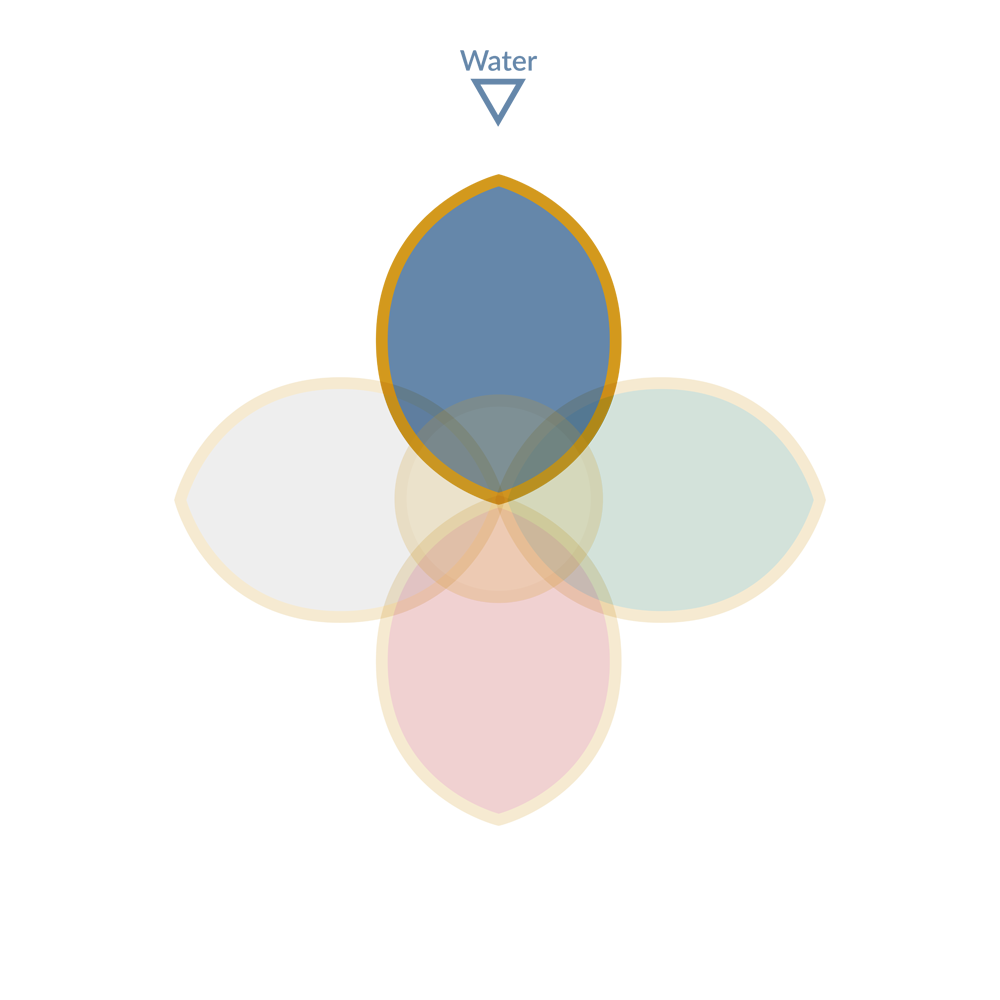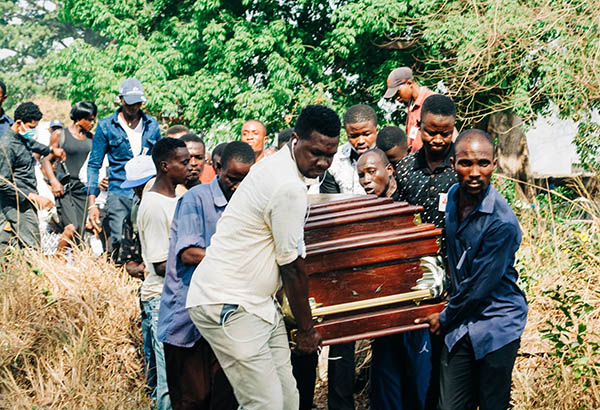
The Law of Attraction: Generating Abundance and the Law of Karma
– Composed by Duane Steffens, and Edited Glenn Nangaku Leisching
Have you ever felt like the universe conspires to make your dreams come true? Or wondered why certain events seem to align perfectly in your life? This phenomenon is often attributed to the Law of Attraction and the Law of Karma. In this article, we’ll delve into the intricacies of these two powerful Laws and explore how they oppose and work together to shape our reality.

Introduction
The Law of Attraction and the Law of Karma are profound principles that delve into the connection between our thoughts, actions, and the reality we experience. These principles suggest that the energy we emit through our thoughts and actions has a direct influence on what we attract into our lives. What is often not considered is the Karmic consequences of misaligned energy – the distracting dissonance of desire that obscures our navigation toward true purpose.
Understanding the Law of Attraction
The Law of Attraction is the idea that ‘positive’ or ‘negative’ thoughts or stories attract ‘positive’ or ‘negative’ experiences into a person’s life. The Law of Karma is the idea that every action has an equal and opposite reaction. These two laws are often seen as being interconnected – the energy we put out into the world is what we attract back. While they can work in unison, they can also work at cross-purposes.
In the new science of quantum mechanics evidence supports the Law of Attraction. The Law of Karma has less scientific validation. Some people find that focusing on positive thoughts and actions helps them to feel happier and more fulfilled. Others believe that by living a karmically-aligned life, they can create a more positive future for themselves.
Whether or not you believe in the Law of Attraction or the Law of Karma, it is important to be mindful of your thoughts and actions. The energy you put out into the world does have an impact on your life, so try to focus on being kind to others. Consider too that what you may believe to be ‘positive’ another may consider harmful. Attracting a new electric car into your life, for example, has significant environmental impacts – both ‘good’ and ‘bad’.
The Law of Karma
The Cycle of Cause and Effect
Karma is deeply rooted in the idea of cause and effect. It suggests that our actions, whether good or bad, create a cycle that shapes our future experiences. This cycle is often referred to as the “karmic wheel” or the “wheel of life.”
The karmic wheel is said to be divided into three parts: the past, the present, and the future. Our actions in the past have an impact on our present, and our actions in the present will have an impact on our future. This is why it is important to be mindful of our actions and to try to live a karmically-aligned life.
Imagine your life, and the millions of decisions we make, as a pendulum. We use effort to push ourselves into so called ‘better’ realms. In doing so we create an equal and opposite reaction, or the potential energy to return to balance or equilibrium. Every moment we move away from this centeredness we create karma. As our inner-pendulum swings from past to future, from like to dislike, from repulsion to attraction, karma returns us to center.
Along the way we create this karmic ‘debt’. Its important to make ourselves available to settle these debts – experience the full consequences of past actions to clear the slate. Sometimes this is experienced as pain or suffering. Attempting to avoid this debt by attracting ‘feel-good’ activities only serves to increase the karmic debt-load.
Intention and Action
Karma is not solely about actions; it also encompasses intention. The energy behind our actions and thoughts contributes to the karmic cycle, influencing the outcomes we face. For example, if we have the intention to help someone, but we do not actually follow through with our actions, we will still create karmic debt. On the other hand, if we have the intention to harm someone, but we do not actually follow through with our actions, we will still create karmic merit.
The Law of Karma is complex and nuanced but it is an important one to understand if we want to live a grounded, fulfilling life. By being mindful of our actions and intentions, we can create a karmic cycle that is beneficial to ourselves and to others.

The Symbiotic Relationship
The Law of Attraction and the Law of Karma are intertwined. Our thoughts and intentions create an energy that interacts with the karmic cycle. While we are creative generators of abundance we are also transformers of karma. A life cleared of karma is a free, sovereign and enlightened life – one that is on purpose in which you can deliver your innate gift of unique medicine.
Thoughts as Seeds: Planting the Right Ones
Just as seeds grow into plants, our thoughts grow into our reality. Planting thought-seeds in alignment with your life-purpose leads to a generous harvest, in alignment with the Law of Karma.
Reaping What You Sow: Karma in Action
Karma ensures that what we put out into the world comes back to us. By cultivating well-aligned intentions, we invite karmic harmony – the consequence is debt-free abundance.
Overcoming Challenges
Breaking Scarcity Thought Patterns
Scarcity thought patterns are like a prison. They keep us trapped in a cycle of negativity that can be difficult to break free from. However, it is possible to overcome scarcity patterns by becoming aware of them and then consciously choosing to think and act differently.
One way to become aware of your scarcity thought patterns is to keep a journal. Write down your thoughts and feelings throughout the day, and pay attention to any patterns that emerge. Once you are aware of these thought patterns, you can start to challenge them. Ask yourself if your thoughts are really true, and if not, what is a more expansive way to think about the situation.
It is also important to be patient with yourself. It takes time to break old habits and form new ones. Be kind to yourself as you make this journey, and celebrate your progress along the way.
Transforming Karmic Debts
Karmic debts are debts that we owe from past lives (many of them ancestral or inter-generational) and behaviours. They can be caused by actions that we have taken, or by things that we have failed to do. Karmic debts can manifest in our current life in many ways, such as through relationships, health problems, or financial difficulties.
The good news is that karmic debts can be transformed. We can do this by acknowledging our karmic debts, learning from them, and making amends. When we do this, we release the energy of scarcity associated with the debt and open ourselves up to aligned abundance.
There are many ways to transform karmic debts. One way is to simply acknowledge the debt and forgive yourself for whatever caused it. Another way is to do something to make amends, such as apologizing to someone you have wronged or helping someone in need. You can also transform karmic debts through spiritual practices such as meditation or prayer.
No matter how you choose to transform your karmic debts, the important thing is to take action. By doing so, you can free yourself from the negative energy of the past and create a more fulfilling future.


Manifesting Abundance
Cultivating an Aligned Mindset
A prosperity mindset involves supporting your ability to manifest abundance. This self-assuredness aligns your energy with the universe, making you a magnet for truthful expression.
To cultivate a prosperity mindset, you can practice gratitude, affirmations, and visualization.
You can also surround yourself with authentic people and things that remind you of your abundance.
Taking Inspired Action
The Law of Attraction requires proactive steps. Taking inspired action towards your life-purpose not only demonstrates your commitment but also amplifies the energy you radiate.
To take inspired action, align with what feels true for you make a plan, and take small steps towards authentic alignment each day.
You can also ask for help from others and be open to new opportunities.
Here are some additional tips for manifesting abundance:
- Be specific about manifesting what aligns with your calling.
- Believe that you can achieve your life-purpose.
- Take action towards aligning with what is true for you.
- Be grateful for what you have.
- Surround yourself with authentic people and universal gifts.
- Remain present and grounded is every moment.
Have fun!
Living in Harmony
Balancing Personal Desires and Collective Good.
In the journey of manifesting our personal desires, it becomes vital to walk the tightrope of balance between our aspirations and the well-being of others. While it’s only natural to pursue our dreams, it’s equally important to recognize our interconnectedness and the impact our actions have on the world around us. When we approach our goals with sensitivity to the needs of others, we foster an environment of harmony.
Radiating Abundance and Compassion
The power of generativity extends far beyond our immediate sphere. It’s like tossing a pebble into a calm pond—those ripples of authenticity spread outward, touching the lives of people we might not even know. By choosing to radiate alignment with our purpose through our thoughts, words, and actions, we create a chain reaction of goodness. And let’s not forget compassion, that gentle force that reminds us of our shared humanity. When we show compassion, we not only uplift ourselves but also contribute to a broader, more positive collective consciousness. After all, a kind word or a helping hand can create a domino effect of kindness throughout the world.
The Ripple Effect
Spreading Positive Alignment Through Energy
Think of energy as a river flowing through every interaction and moment. It’s not confined to a single point; rather, it ripples outward, touching everything it encounters. Just as a smile can brighten someone’s day, our energy has the potential to create a chain reaction of good vibes. It’s fascinating how our actions, no matter how small, can set off a series of events that lead to greater harmony. Sometimes, the impact is subtle and gradual, like sunlight slowly warming up a room. Other times, it’s immediate and powerful, like a wave of laughter infecting everyone in a room. By being mindful of the energy we exude, we contribute to a world where positivity begets positivity.
Attracting Like-Minded Souls
Have you ever noticed that you tend to gravitate towards people who share a similar outlook on life? That’s the Law of Attraction at play. Just as magnets are drawn to each other, so are individuals with compatible energies. When you focus on cultivating and practicing good karma, you emit a certain energy—a vibe that resonates with others who are on a similar wavelength. It’s like a secret language of the universe; you attract those who mirror your mindset. These like-minded souls become your companions on this journey, supporting and uplifting you as you collectively work towards creating a better reality. So, as you refine your energy, remember that you’re not just shaping your own world; you’re also shaping the company you keep

FAQs
Is the Law of Attraction scientifically proven?
The Law of Attraction principles align with the psychology of positive thinking and the energy-matter connection in quantum physics.
Can the Law of Karma be changed?
The Law of Karma emphasizes that our current actions shape our future experiences. By acting positively and consciously redirecting our intentions, we can influence our karmic trajectory.
How long does it take to see results with the Law of Attraction?
Results vary based on individual circumstances, belief systems, and consistent effort. Some experience rapid shifts, while others may take more time to see significant changes.
What are some practical ways to raise my vibrational energy?
Engage in activities that bring joy, practice mindfulness and meditation, cultivate gratitude, surround yourself with positive influences, and engage in acts of kindness.
How does gratitude contribute to attracting abundance?
Gratitude aligns your energy with positivity and abundance. By acknowledging and appreciating what you have, you open yourself to receiving more of the same energy.






















